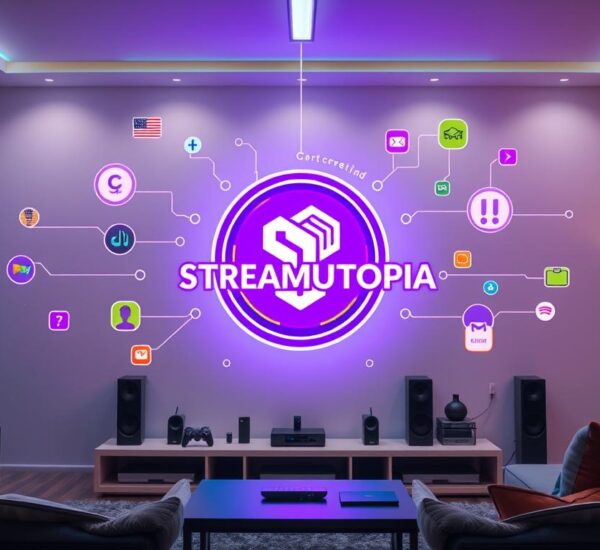Did you know video latency impacts your streaming? High latency leads to delays and buffering. But, low latency means smooth real-time streaming.
Video latency is the delay from when you ask for a video to when it starts playing. For things like video calls or watching live events, less than 100 milliseconds delay is best. Yet, it’s okay to have more delay for watching shows that were already recorded.
Many things can affect how long the video takes to start playing. This includes network devices, how the data flows, and the route it takes. To enjoy seamless IPTV, it’s key to manage and understand latency well.
This article will delve into streaming latency and its effects on live and IPTV streaming. We’ll share tips to make your streaming quality better by managing video latency.
Key Takeaways:
- Video latency refers to the delay between the request and transfer of a video stream.
- Low latency networks (less than 100 ms) are desired for real-time streaming.
- High latency networks are acceptable for pre-recorded events.
- Factors impacting latency include network routers, satellite communications, and transmission nodes.
- Optimizing streaming latency is crucial for a smooth IPTV streaming experience.
What is Live Streaming Latency?
Live streaming latency is the delay between an action happening and viewers seeing it. If someone waves at the camera, there might be a delay before you see the wave on your screen. This delay is a natural part of live streaming.
Many things can cause live streaming latency. These include how the image is captured, coded, and sent to viewers, as well as how long it takes to go through the network to your device. Also, the video player’s buffer and the type of technology used to transmit the video can make the delay longer.
To make the delay less, content creators and streaming platforms work on improving every step of the live streaming process. By doing this, they can offer viewers a more real-time experience without much delay.
The picture above shows how live streaming latency works. It explains the gap between the action and when it shows on your screen. This delay impacts the live feel of what you’re watching.
| Factors impacting live streaming latency | Description |
|---|---|
| Image capture | The process of changing a live image into digital form. |
| Encoding and packaging | How the video gets compressed and prepared for sending. |
| CDN propagation | The delay caused as the video goes through networks to your device. |
| Last-mile delivery | The final connection to your device that can slow things down. |
| Video player buffer | The space set aside to reduce how often the video pauses. |
| Transmission protocols | The rules used for sending and watching live video. |
Working on these issues means a better live streaming experience for the audience. By reducing the delay, the live content feels more immediate to viewers.
Factors Affecting Latency in Live Streaming
Latency in live streaming can change because of many different parts in the streaming process. Knowing these parts well helps make streaming better and faster. It’s important to look at the most important parts that cause latency in live streaming.
Image Capture
Capturing images is key in live streaming. It’s when a live picture turns into digital signals for the network. The time to capture and change the image adds to how long it takes to stream.
Encoding and Packaging
Before videos are sent, they’re compressed and made smaller. This makes sending them easier. But, this step can also make streaming slower because it prepares the video to be sent.
Content Delivery Networks (CDNs)
CDNs spread live video across many servers in different places. This helps with faster delivery by reducing stress on one server. Yet, how close the CDN is to the viewer and its own network can still slow things down.
Last-Mile Delivery
The last part before a video reaches your device is called the last mile. A good network at home and no traffic on the network help avoid delays. But, these can still slow down the video.
Video Player Buffer Size
The buffer in a video player affects streaming speed too. It stores a bit of the video to deal with changes in the network. But, big buffers can cause more delay since they must fill before the video starts.
Transmission Protocols
The way videos are sent can also cause slow streaming. Some methods like RTSP and RTMP allow for better live streaming but can be slower. Others like HLS and MPEG-DASH are faster but not as live. Choosing the best protocol is crucial.
To make live streaming faster, we must think about many things. This includes how we take images, make videos ready to send, choose CDNs, make the last mile better, pick the right buffer size, and use smart transmission methods.
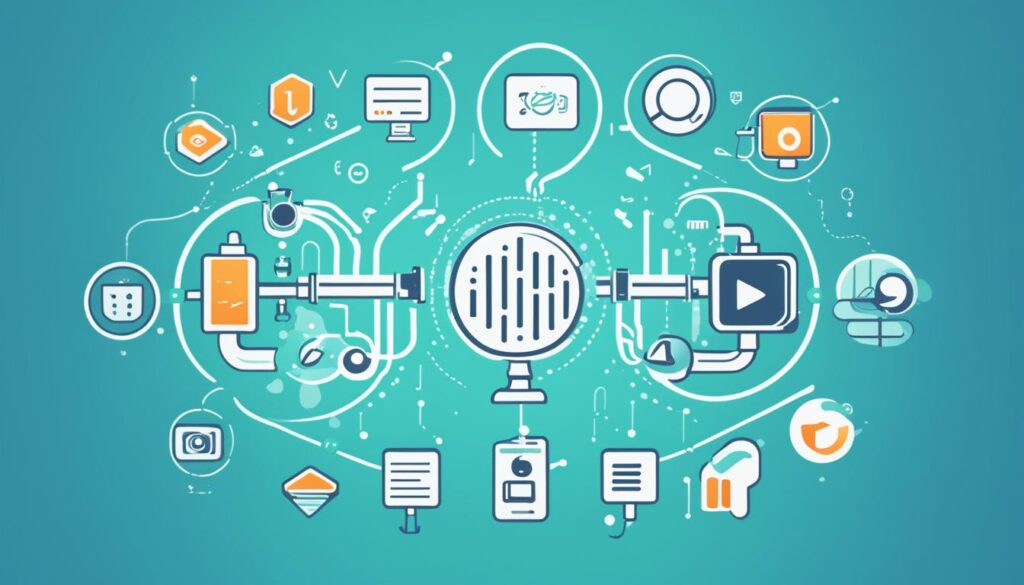
| Factors Affecting Latency in Live Streaming |
|---|
| Image Capture |
| Encoding and Packaging |
| Content Delivery Networks (CDNs) |
| Last-Mile Delivery |
| Video Player Buffer Size |
| Transmission Protocols |
Optimizing Latency in Video Streaming
Reducing latency in video streaming requires the right tech and cloud servers. Muvi Live is one top pick for this. It’s a cloud-based tool that lets you control video quality and reduce latency to 10 seconds or lower.
Muvi Live helps creators and broadcasters cut down on delay. It uses the latest tech to give viewers a smooth, real-time streaming experience.
Muvi Live’s special tech makes live video play instantly. This means almost no waiting for viewers, keeping everything happening right now.
Also, Muvi Live doesn’t need big, costly equipment. Its cloud system lets creators easily handle their streams. They get to use reliable, scalable cloud servers.
From live sports to gaming to corporate talks, Muvi Live helps all kinds of video streams run better. It makes watching them more fun and without any hiccups.
Understanding IPTV Streaming
IPTV stands for Internet Protocol Television. It’s a big change in how we watch TV. Instead of using cables or satellites, we watch shows over the internet. This change makes TV more flexible and easy to access.
With IPTV, you can watch TV shows and movies anywhere. All you need is an internet connection. This lets you enjoy TV beyond your living room.
IPTV is great because it’s all about making watching TV easier. You can use many devices to watch your shows. This includes smart TVs and even your phone.
IPTV works on the internet, so it’s very flexible. This means content providers can give you a better viewing experience. You’ll enjoy watching videos on a whole new level.
One great thing about IPTV is the huge variety of content. You can watch sports, movies, news, and more. Everyone can find something they like.
To see how IPTV works, look at the comparison below:
| Satellite/Cable TV | IPTV Streaming |
|---|---|
| Limited channel options | Wide range of channels |
| Scheduled programming | On-demand content |
| Dependent on location | Global access |
| Hardware installation | Device + internet connection |
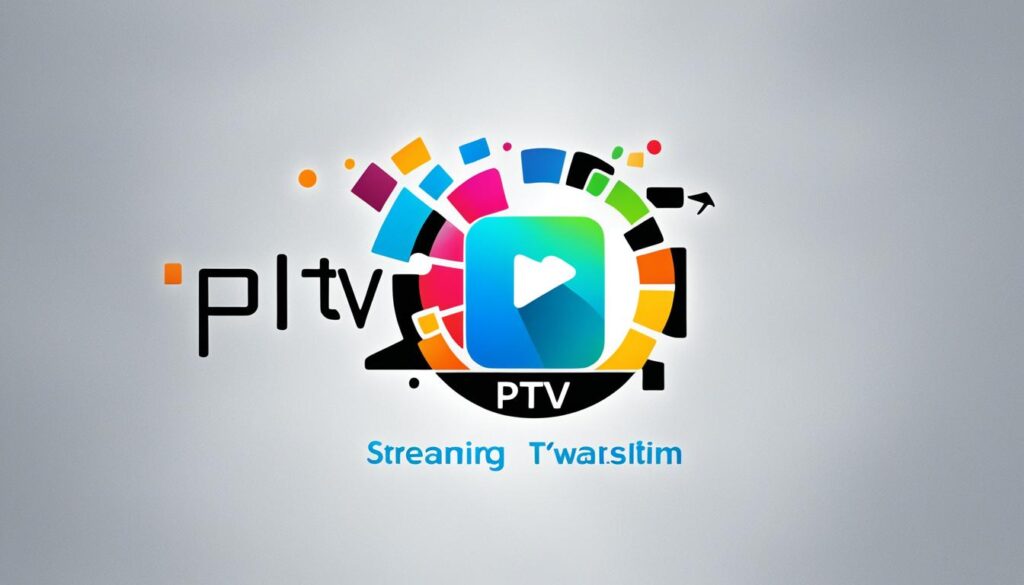
IPTV makes watching TV more your own. You get to pick what to watch and when. No more waiting for specific show times.
Do you love sports, TV series, or movies? IPTV makes it all better. It gives you more control and more choice.
Popular IPTV Services and Requirements
IPTV streaming offers lots of content through services like Netflix, Hulu, Amazon Prime Video, and YouTube TV. To get the best streaming experience, users must meet certain requirements set by these providers.
The internet speed is critical for these services. Faster connections mean you can watch content smoothly. You need more speed for watching in higher quality like HD.
For instance, Netflix says you need at least 3 Mbps for standard quality and 5 Mbps for HD. Hulu needs 3 Mbps for any streaming, and Amazon requires 1 Mbps for standard and 5 Mbps for HD. YouTube TV needs 3 Mbps just to start.
Remember, you might need even more speed if you’re watching in HD or have more devices connected. Each device might need its own share of the speed.
To make sure your internet is fast enough, check your speed online or with your provider. If it’s slow, you might need to upgrade your plan or fix your network.
If your internet meets the requirements, watching IPTV services like Netflix and Hulu will be smooth. A fast and reliable internet connection is key to enjoying these services as they should be.
Factors Affecting IPTV Streaming Performance
Several factors can affect how well IPTV streaming works. By working on these aspects, you can enjoy watching without any hiccups. Here are the main things to look at:
Bandwidth and Internet Speed
How much bandwidth you have and your internet speed matter a lot. More bandwidth means data travels faster. This makes streaming smoother with fewer breaks. To get better bandwidth, think about upgrading your internet plan. Or, choose an ISP known for quicker speeds. Doing this guarantees you smooth streaming without any stops.
Network Latency
Ever heard of network latency? It’s the time data takes to move through a network. If this time is too long, video might pause or stutter. To beat these issues, your network and its link to the streaming server must be top-notch. This includes lessening the number of connected devices. It also means avoiding busy network times, and using cables for better connections.
Wi-Fi Optimization
For wireless streaming, having a good Wi-Fi setup is critical. Your Wi-Fi’s reach, signals from other gadgets, and even your Wi-Fi band choice can all affect streaming. To make your Wi-Fi work better, put your router in a place where it can reach all areas and isn’t blocked by other electronics. Using extenders can also help. And don’t forget about choosing the best Wi-Fi band for your home.
Wired Connections
Although Wi-Fi is easy, using cables can give much better results. Connect your streaming device to your router with an Ethernet cable. This stops Wi-Fi problems like weak signals or interference. You’ll get a more reliable and speedy connection. This means you won’t face pauses or delays when watching IPTV.
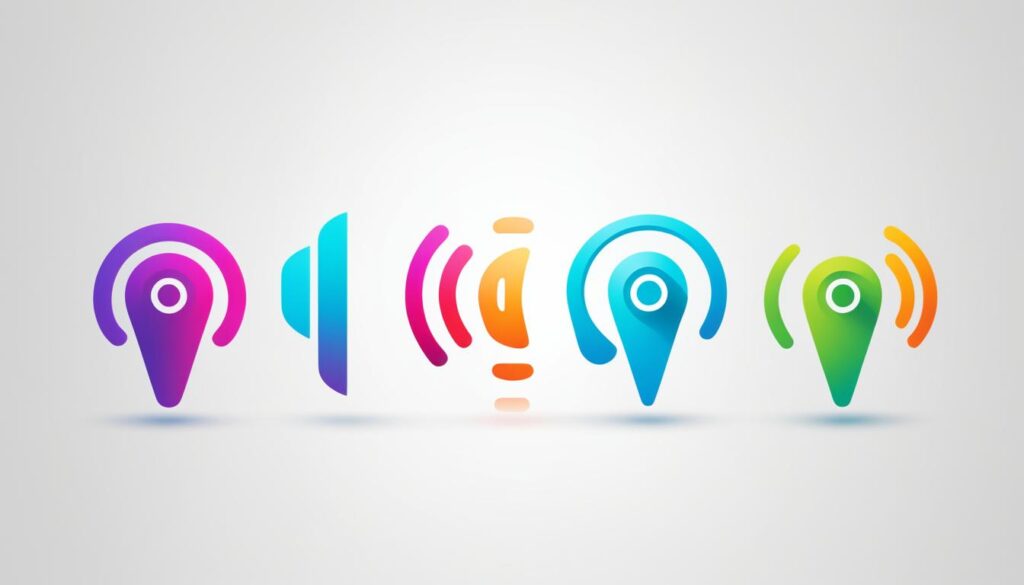
Remember, by focusing on bandwidth, network latency, Wi-Fi, and wired connections, you can make your IPTV experience great. You’ll have no trouble watching your favorite shows and movies.
| Factors | Impact on IPTV Streaming Performance |
|---|---|
| Bandwidth and Internet Speed | Determines the smoothness of streaming and reduces buffering. |
| Network Latency | Affects video playback delay and can cause interruptions. |
| Wi-Fi Optimization | Optimizing Wi-Fi signal strength and minimizing interference improves streaming quality. |
| Wired Connections | Reliable and direct connections offer stable and consistent streaming performance. |
Optimizing Your Home Network Infrastructure for IPTV Streaming
To get the best IPTV streaming, you need to work on your home network. There are some key steps to make sure streaming goes smoothly. Let’s look at what you can do:
Choose a Reliable Internet Service Provider (ISP)
First off, choose a good internet provider. A reliable ISP offers a stable, fast connection that’s vital for IPTV. Look into their plans and pick one that fits your streaming demands.
Select a Capable Router
A router’s role is crucial for strong IPTV streaming. Find one with advanced options like dual-band and QoS. These help with better bandwidth use and smoother streaming by reducing buffering.
Optimize Your Wi-Fi Settings
Getting your Wi-Fi right is key for great IPTV. Place your router centrally and use extenders for more coverage. A strong password keeps your network safe.
Utilize Wired Connections Whenever Possible
Wired connections are more reliable than Wi-Fi. For devices that need a lot of bandwidth, like TVs or gaming consoles, use cables. This lessens delays and keeps the stream smooth.
Implement Network Security Measures
Protect your network for safe IPTV and personal data. Use Wi-Fi encryption, strong passwords, and keep your router updated. Adding firewalls and port forwarding helps too.
By following these steps, you’ll get smooth IPTV streaming with fewer hiccups.
Wi-Fi Optimization Techniques for Better IPTV Streaming
To make your IPTV better, you need great Wi-Fi. The right Wi-Fi setup keeps your shows smooth without pause. To improve your Wi-Fi, follow these steps:
1. Select the Right Wi-Fi Frequency Band
Choosing the right Wi-Fi frequency is key. Routers have 2 bands: 2.4 GHz for more area but slower, and 5 GHz for speed but less area. For IPTV, pick the 5 GHz band for a stronger, clearer signal.
2. Optimize Wi-Fi Signal Strength
Strong Wi-Fi is needed for clear shows. Put your router in a central spot, free from walls and big things. Also, adjust the router’s antennas to point towards where you watch.
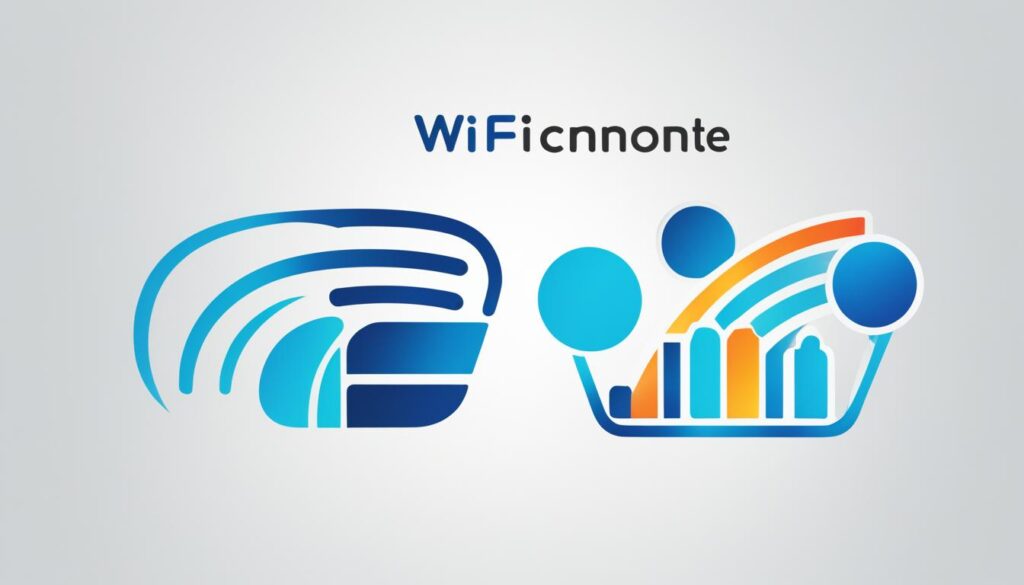
3. Minimize Interference
Other networks and gadgets can mess up your Wi-Fi. To fix this, move your Wi-Fi channel to a quieter one. Keep devices that cause static, like microwaves, away from the router. And don’t put your router by metal or electronics.
4. Consider Wi-Fi Extenders or Mesh Systems
If some spots in your home have weak Wi-Fi, try extenders or mesh systems. Extenders boost the signal far, and mesh systems use many devices to keep a strong signal everywhere. This means you can watch IPTV without issues.
Follow these steps to up your IPTV streaming. By selecting the best Wi-Fi band, enhancing signal strength, fighting interference, and adding extenders or mesh, your IPTV experience will be top-notch.
Network Security Considerations for IPTV Streaming
For IPTV streaming, keeping your network secure is very important. You must follow certain best practices to keep your home network safe. This will help you have a no-hassle streaming time.
Securing Your Home Network
It’s key to protect your home network. Start by securing your Wi-Fi with encryption and strong passwords. Doing this stops others from getting into your network and keeps your info safe.
Also, use strong, unique passwords for your Wi-Fi. Mix letters, numbers, and special characters in them. This makes it hard for others to guess your password.
Configuring Firewall and Port Forwarding Settings
Setting up your firewall is vital for IPTV security. It shields your network from harmful internet traffic. This means your devices are safer from outside threats.
Port forwarding helps your IPTV stream better without risking network safety. With it, you open certain router ports for smoother streaming. This keeps your network safe while you enjoy watching.
Utilizing Quality of Service (QoS) Settings
Quality of Service (QoS) is good for making sure your IPTV streams well. It lets you direct network resources to IPTV, boosting its performance. This means better quality and less buffering.
Using QoS can make your streaming experience smooth. It ensures your IPTV gets the network resources it needs. So, you face less buffering and enjoy watching more.
Conclusion
To have the best IPTV streaming, it’s important to work on the delay. Think about the network, internet speed, and Wi-Fi. Make sure everything is set up well to watch without problems.
Making your home network better is key for great streaming. Choose a good internet provider and router. Set up your Wi-Fi properly and keep it secure.
By doing these things, you help improve your streaming. This way, watching TV, movies, or live shows becomes a great experience. Make your setup right for smooth watching.
FAQ
What is streaming latency?
What is live streaming latency?
What factors affect latency in live streaming?
How can latency be optimized in video streaming?
What is IPTV?
What are the internet speed requirements for IPTV streaming?
What factors can affect IPTV streaming performance?
How can I optimize my home network infrastructure for IPTV streaming?
What Wi-Fi optimization techniques can improve IPTV streaming?
What network security considerations are important for IPTV streaming?




